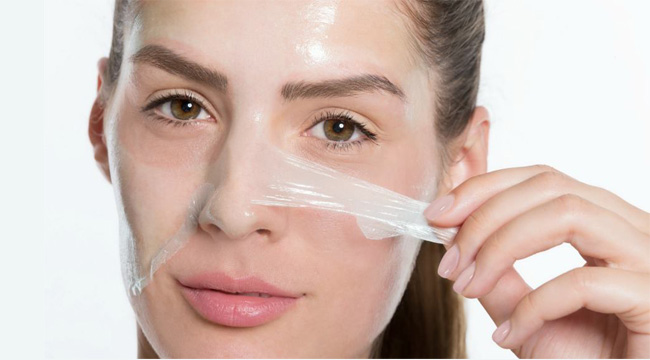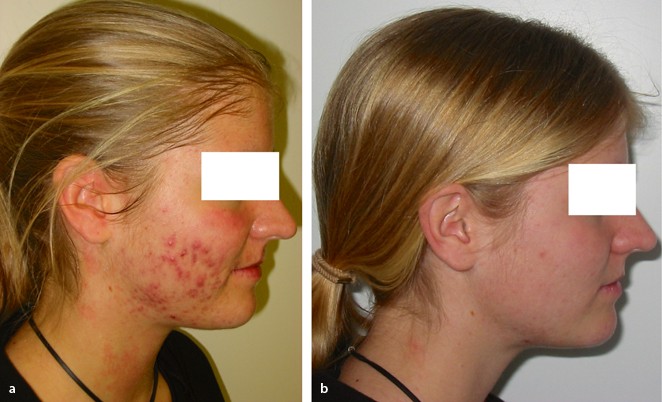

It’s a simple, non-invasive procedure that can treat issues in a short amount of time-no need for complex surgical procedures.
Chemical peeling side effect skin#
Superficial chemical peels are a cost-effective way to treat even deep-seated skin problems when compared with laser therapy.Chemical peels have major upsides, making them beneficial in lots of ways: If you’re thinking about chemical peels, you’re on the right track. However, this combination can be painful and requires anesthesia. Your dermatologist may also use croton oil with phenol to enhance the effectiveness of the peel. The recovery time is one of the longest of any dermatological procedure. Phenol peels take longer to perform than other peels and require ongoing care after the procedure. A board-certified dermatologist who is also a chemical peel expert, will understand the nuances of your skin and provide the right solution.Ī typical deep peel is a phenol peel, known for treating long-term deep wrinkles and scars. These peels are known to bring about significant improvement in just one session.ĭeep peels should not be used by just anyone and can cause damage if misused. Deep peels even treat some precancerous skin conditions. Some of us have severe acne scars, deep wrinkles, or uneven skin tone. Unlike light peels, there will be a few days of downtime as the skin peels off.įor serious, deep-seated skin concerns, a deep skin peel may be best. Medium peels require similar steps as surface peels but will feel more intense during the application. Sometimes, superficial and medium depth peels may be combined to increase their effectiveness. Some dermatologists also use retinoic acid, which is perfect for acne as it’s much more potent than over-the-counter retinoids.īoth TCA and retinoic acid are flexible in their application. TCA peels are great for more deep-rooted wrinkles and sunspots. Your dermatologist may use Trichloroacetic (TCA) acid and glycolic acid to complete these medium peels. Medium peels go a bit further, affecting the dermis. Jessner’s peels are great for evening skin tone, reducing the appearance of scars and smoothing out wrinkles. There is also the Jessner’s peel- it combines salicylic acid, lactic acid, and sometimes resorcinol. These peels can happen during your lunch hour and require little downtime. Your dermatologist may use salicylic acid, a lipid-soluble beta-hydroxy acid (BHA) that is able to penetrate deep into the oil glands. AHAs are great for stimulating collagen, so you get fantastic anti-aging benefits. These surface peels use mainly alpha hydroxy acids (AHAs) like glycolic acid, mandelic acid, citric, and lactic acids. These peels can also tackle acne, rosacea and enlarged pores. Superficial peels are excellent for sun damage, dull skin and discoloration. Most chemical peels treat the epidermal layer and are called light peels or superficial peels. Some peels target each layer of your skin, using different acids to provide you with the results you need. More and more people see them as an effective way to treat their skincare problems.īased on your skin type and current skin concerns, your dermatologist will decide on the correct type of chemical peel. You’ll feel a slight tingling sensation or a more intense feeling based on the type of peel.Ĭhemical peels have been around for hundreds of years and took a bit of a hiatus with laser therapies’ popularity.

Your dermatologist or esthetician will use a cotton swab, sponge, or brush to apply the chemical gently to your face.

The result is dull skin, wrinkles, and a host of other skin concerns.Ĭhemical peels help slough off the top layer of skin by applying a chemical solution made of alpha and beta-hydroxy acids. However, this skin turnover grinds to a crawl with age. The epidermis is constantly renewing itself, providing a fresh layer of skin every 28 days or so. Our skin has three main layers: the outermost epidermis, the dermis, and the deeper subcutaneous layer. If you’ve been thinking about getting a skin peel and even Googled “ chemical peel near me ,” you’ve come to the right place. Chemical peels are a great way to address these issues and more. The way we look on the outside affects how we feel on the inside. The surface layer of our skin is prone to all types of hazards: sun damage, discoloration, pollutants, wrinkles, acne, and even acne scarring.


 0 kommentar(er)
0 kommentar(er)
